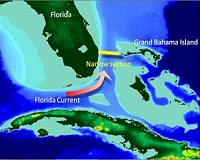| . |  |
. |
Waveland, Mississippi (AFP) July 10, 2010 For the men sweating under the hot sun as they scoop oil from fragile coastal marshes and sandy beaches, the worst environmental disaster in US history has given them what they desperately needed: a good-paying job. "I feel bad for the environment and it's going to hurt a lot of people like the fishermen, but I'm looking at it as a job," said Larry Adams, 33, a carpenter who left his home in Alabama to captain a clean-up boat out of Waveland, Mississippi. The economy was pretty bad in Bayou La Batre even before the massive oil spill forced fishermen to hang up their nets, Adams said. Now, everyone back home is out of work. So he's grateful for the 300 dollars he gets for working a 12-hour-day in the punishing heat and hasn't taken a day off since he got to Mississippi about 10 weeks ago. And he doesn't expect the work to go away any time soon. "The Valdez spill in Alaska was (21) years ago and they're still cleaning it up," he told AFP as he got ready to head back out on the water to repair battered boom. An estimated 2.1 to 4.1 million barrels of oil has gushed into the Gulf of Mexico since the BP-leased Deepwater Horizon sank on April 22 after a deadly explosion, and experts warn it will be years, if not decades before crude stops washing up on shore. Oil has sullied beaches in all five Gulf states -- Texas, Louisiana, Mississippi, Alabama and Florida -- forcing the closure of fishing grounds and threatening scores of coastal communities with financial ruin. More than 46,000 people and nearly 7,000 boats are now employed in the response. But there are not nearly enough jobs for everyone who needs one. "We get people driving up every day looking for work," said Harold McCaul, 58, who mans the gate at the clean-up operations center in Waveland. McCaul had been looking for work for months before a friend hooked him up with a BP contractor managing security on the site. His boat hoist company had been dying ever since Hurricane Ike ravaged the coast in 2008 and people decided they'd had enough of rebuilding and started moving away. And with all the businesses shutting their doors in the wake of the spill, he figures there's no way he'll be able to sell his home so he can raise enough money to move back to Texas. "I don't think I can give my place away," McCaul said. Down the road in Pass Christian, Mississippi, crews in yellow reflective vests fanned out across the white sand beach, scooping tar balls from the water's edge with shovels and rakes. A dangerous heat advisory forced the crews to take frequent breaks as the mercury rose to 34 degrees Celsius (94 Fahrenheit) amid 58 percent humidity. Michael Howson, 48, left his home in Chicago six weeks ago to work as a safety supervisor with the crew. He's seen dead porpoises, turtles, pelicans, crabs, sea turtles and patches of oil as big as a car wash up on the beach. "It's terrible they haven't been able to cap it yet," he told AFP. "It's destroying the beaches, it's destroying the wildlife and it's destroying the people." BP removed a loose-fitting cap on Saturday and hopes a new containment system that will capture all of the oil will be operational in the coming days. But Damon Kirkland, 22, figures it will be years before he heads back into the Gulf again to go fishing with his father. He thinks BP and the government should have done more to prevent the spill in the first place, but does his best to focus on his clean-up job rather than the disturbing sight of dead fish floating in oil. It's frustrating work as every high tide pushes a fresh coat of oil onto the delicate marsh grasses and every storm knocks the protective boom out of place. "As of right now, it doesn't bother me, but I'm sure it will," he told AFP. "Hopefully this cap will work and they can get it fixed and we can go ahead and get it cleaned up."
Share This Article With Planet Earth
Related Links Our Polluted World and Cleaning It Up
 The Long-Term Fate Of The Oil Spill In The Atlantic
The Long-Term Fate Of The Oil Spill In The AtlanticHonolulu HI (SPX) Jul 09, 2010 The possible spread of the oil spill from the Deepwater Horizon rig over the course of one year was studied in a series of computer simulations by a team of researchers from the School of Ocean and Earth Science and Technology (SOEST) at the University of Hawaii at Manoa. Eight million buoyant particles were released continuously from April 20 to September 17, 2010, at the location of the ... read more |
|
| The content herein, unless otherwise known to be public domain, are Copyright 1995-2010 - SpaceDaily. AFP and UPI Wire Stories are copyright Agence France-Presse and United Press International. ESA Portal Reports are copyright European Space Agency. All NASA sourced material is public domain. Additional copyrights may apply in whole or part to other bona fide parties. Advertising does not imply endorsement,agreement or approval of any opinions, statements or information provided by SpaceDaily on any Web page published or hosted by SpaceDaily. Privacy Statement |